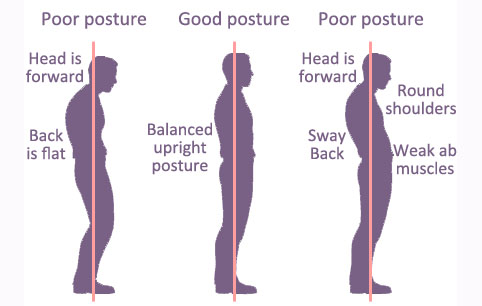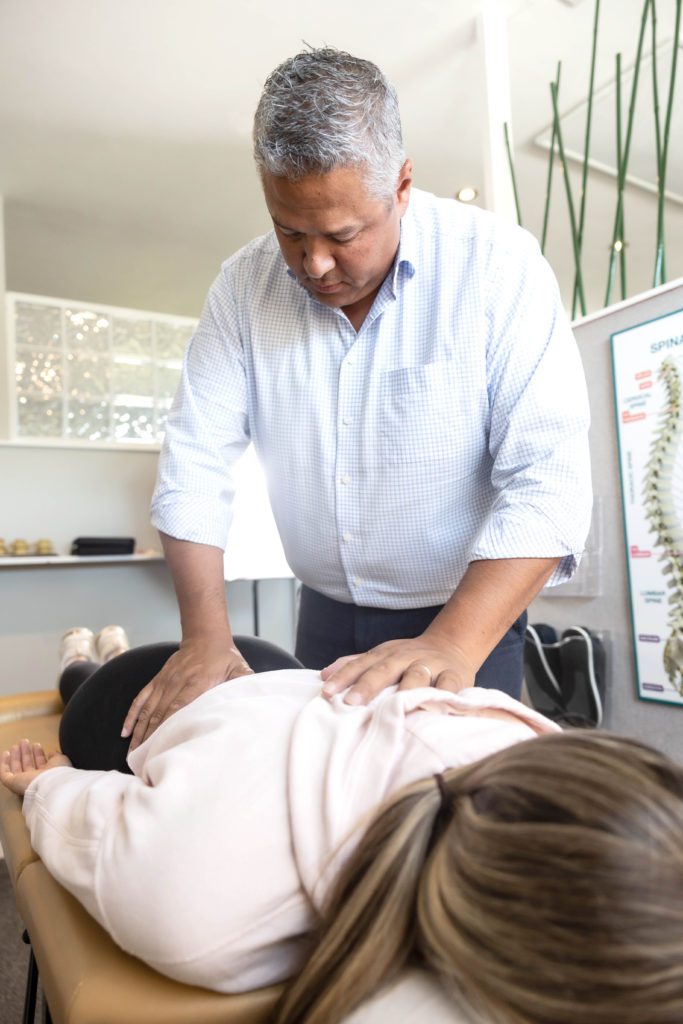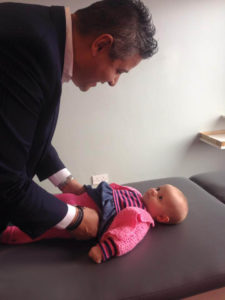Managing low back pain can be difficult, but it doesn’t have to control your life.
Low back pain is one of the most common ailments affecting people today. Whether you experience occasional discomfort or chronic pain, it’s important to understand the causes, risk factors, and effective ways to manage this condition.
At Optimal Chiropractic, we believe in addressing the root cause of pain, promoting overall spinal health, and preventing future issues.
In this blog, we’ll explore the reasons behind low back pain, risk factors that increase the likelihood of experiencing pain, preventive strategies, and how chiropractic care can help you live pain-free naturally.
Why Am I Experiencing Low Back Pain?
Did you know that approximately 80% of people experience back pain at some point in their lives? While many factors can lead to back pain, some common causes might surprise you:
Poor Posture:
Sitting for prolonged periods, especially with bad posture, can put strain on your lower back. Many of us spend hours at desks, hunched over computers, which leads to misalignments and tension in the spine. The body is designed to move, and being sedentary for long stretches causes stress on muscles and joints.
Improper Lifting:
Lifting heavy objects without proper technique, such as bending from the waist or twisting, can easily lead to injury. The back is not meant to carry heavy loads without support from the legs and core muscles.
Overuse or Physical Activity:
Engaging in strenuous physical activities, whether in the gym or during everyday movements, can strain the back if not done with proper form. Injuries can occur when the body doesn’t get enough rest to recover between workouts.
Spinal Misalignment:
Often, back pain isn’t caused by a single event but accumulates over time due to stress, poor posture, and lack of movement. Misalignments in the spine can develop gradually, leading to chronic discomfort if left unaddressed.
Chiropractic care focuses on correcting these misalignments and restoring balance to your body. If you’re experiencing low back pain, identifying the root cause is the first step toward relief.
Factors That Increase Your Risk of Low Back Pain
While back pain can affect anyone, certain factors can make you more susceptible to it:
Age:
Back pain commonly starts between the ages of 30 and 40. As we age, the spine’s muscles and joints lose strength and flexibility, making us more prone to discomfort. While aging is inevitable, maintaining strength and mobility can help prevent back pain.
Physical Fitness:
Weak muscles, particularly in the core and lower back, can increase the risk of injury. If your muscles aren’t well-conditioned, your back has to work harder, leading to strain and potential pain.
Weight:
Excess weight, especially around the abdomen, adds pressure to your lower back and spine. This additional stress can lead to discomfort or even long-term damage to the vertebrae and discs.
Occupation:
Certain jobs increase the risk of back pain, particularly those that involve heavy lifting, twisting, or prolonged sitting. Desk jobs, in particular, contribute to poor posture, while physically demanding jobs can result in repetitive strain injuries.
Smoking:
Smoking is a lesser-known factor contributing to back pain. It reduces blood flow to the spinal discs, impeding their ability to heal from injury and increasing the likelihood of degeneration.
By recognising these risk factors, you can take proactive steps to reduce the chance of experiencing back pain.
At Optimal Chiropractic, we provide guidance and care tailored to your individual needs to help you protect your spine.
How to Prevent Back Pain
Prevention is always better than cure, and there are several steps you can take to maintain spinal health and avoid back pain:
Sleep Well:
Quality sleep is essential for recovery. Your mattress and sleeping position play a crucial role in spinal alignment. Ensure you sleep in a way that supports your back, ideally on a firm mattress.
Manage Stress:
High stress levels often lead to muscle tension and poor posture. Regular relaxation techniques like deep breathing, meditation, or yoga can help ease stress and reduce the strain on your back.
Strengthen Your Core:
A strong core helps stabilise the spine, reducing the risk of injury. Incorporating exercises like planks, bridges, or Pilates into your routine will protect your back during everyday movements.
Stretch Regularly:
Stretching keeps your spine flexible and improves posture. Regular stretching of the back, shoulders, and legs helps alleviate tension and enhances mobility.
Stay Hydrated:
Drinking plenty of water keeps your spinal discs hydrated, which can prevent degeneration over time. Proper hydration also aids in overall joint and muscle health.
Stay Active:
Movement is essential for maintaining strength and flexibility in the spine. Whether through walking, light exercise, or yoga, regular activity helps reduce the risk of back pain.
Maintain a Healthy Weight:
A balanced diet and healthy body weight contribute to spinal health. Excess weight, particularly around the midsection, puts unnecessary pressure on the spine.
Practice Good Posture:
Whether sitting or standing, maintaining proper posture reduces the strain on your spine. Be mindful of your body position during daily activities to prevent long-term damage.
Incorporating these simple habits into your daily life can make a significant difference in preventing back pain.
Additionally, regular chiropractic adjustments can help keep your spine in optimal condition, reducing your chances of future discomfort.
Managing Low Back Pain – Exercises to Relieve the Pain
If you’re already experiencing low back pain, certain exercises can provide relief by stretching and strengthening your back muscles. Here are a few you can try:
Cat-Cow Stretch:
Start on your hands and knees. As you exhale, arch your back towards the ceiling, then drop your belly towards the floor as you inhale. This movement helps to loosen the spine and release tension in the lower back.
Child’s Pose:
Sit back on your heels, extending your arms forward and lowering your chest to the floor. This stretch gently opens up the lower back and helps reduce stiffness.
Knee-to-Chest Stretch:
Lie on your back, bringing one knee toward your chest and holding it for 20-30 seconds. Repeat with the other leg. This stretch relaxes the lower back muscles and improves circulation.
Bridge Exercise:
Lie on your back with your knees bent and lift your hips towards the ceiling. Hold for a few seconds before lowering down. This exercise strengthens your glutes and lower back, providing better support for your spine.
Seated Forward Fold:
Sit with your legs extended and gently reach towards your toes. This stretch targets the hamstrings, which, when tight, can contribute to lower back discomfort.
Consistency is key when it comes to these exercises. Doing them daily can help improve your flexibility, reduce tension, and prevent further pain.
Chiropractic Care and Low Back Pain Relief
When it comes to understanding and managing low back pain, chiropractic care is one of the most effective, non-invasive options available.
Chiropractors focus on aligning the spine and addressing the root causes of pain rather than just treating symptoms. Research supports chiropractic adjustments as a reliable treatment for reducing low back pain, improving mobility, and preventing the recurrence of pain.
At Optimal Chiropractic, we use a gentle, precise technique to adjust the spine and relieve tension. For pregnant women experiencing back pain, our methods are safe and comfortable, providing relief without the use of medication.
We also emphasise the importance of regular adjustments to maintain spinal health and avoid long-term complications.
Will the Pain Go Away By Itself?
Many people wonder if their low back pain will resolve on its own. In some cases, mild pain may improve with rest, stretching, and self-care. However, if pain persists for more than three months or recurs frequently, it may indicate an underlying issue that requires professional care.
Research shows that untreated back pain often returns, and over two-thirds of people experience recurrent pain within a year.
Chiropractic care addresses the root cause of pain by aligning the spine and promoting healing, helping to prevent future issues.
Conclusion
Low back pain is a widespread issue, but it doesn’t have to control your life. By understanding the causes, recognising risk factors, and taking preventive measures, you can protect your spine and maintain a healthy, active lifestyle.
If you’re already experiencing pain, exercises and chiropractic care can provide lasting relief without the need for medication or surgery.
At Optimal Chiropractic, we’re here to help you feel your best and live pain-free naturally.
Book a consultation today to take the first step toward a healthier spine. Call 021 487 8465.















